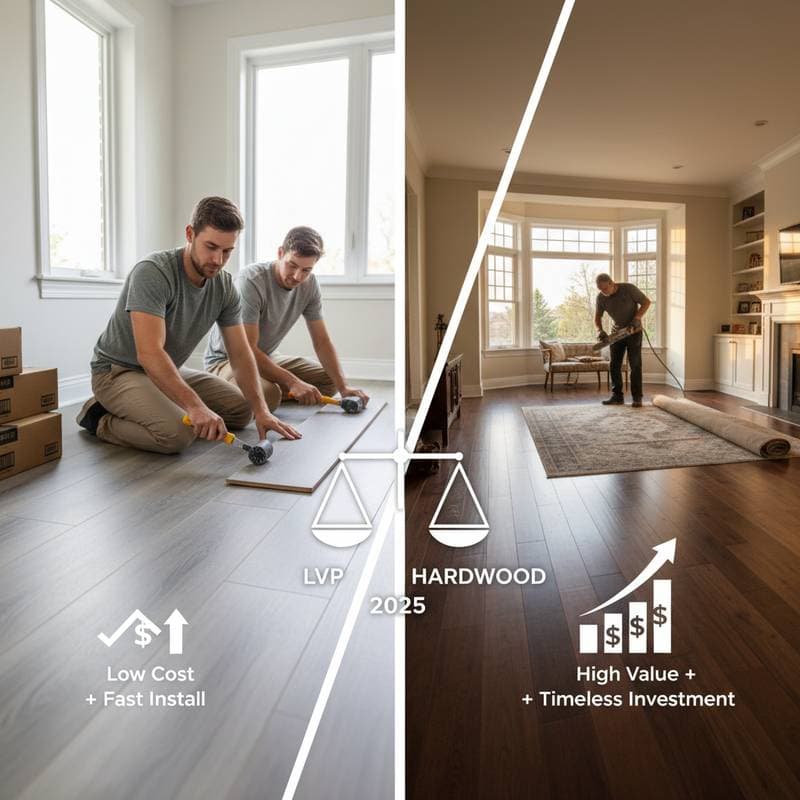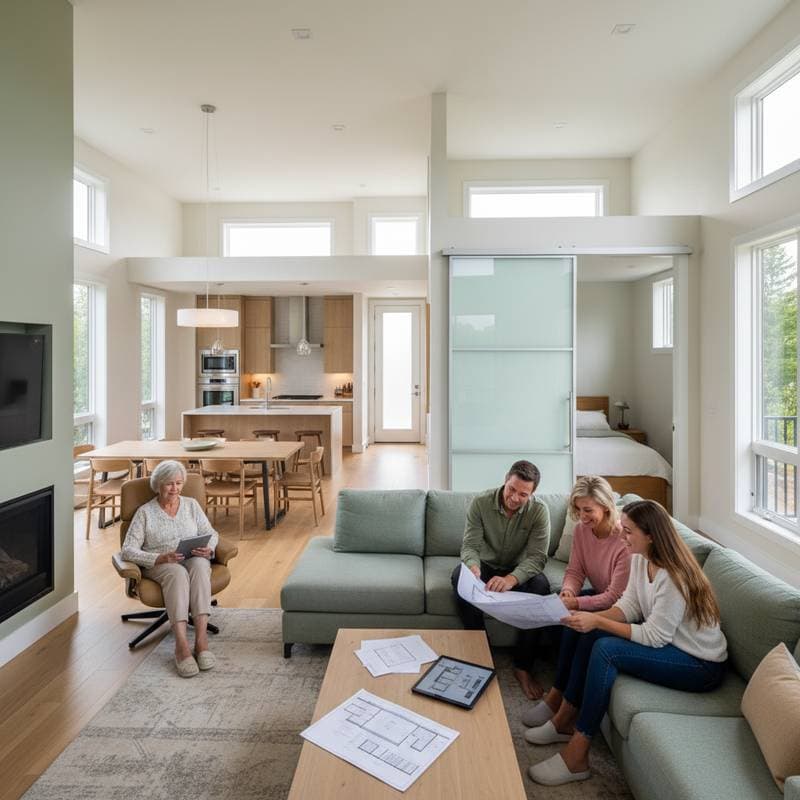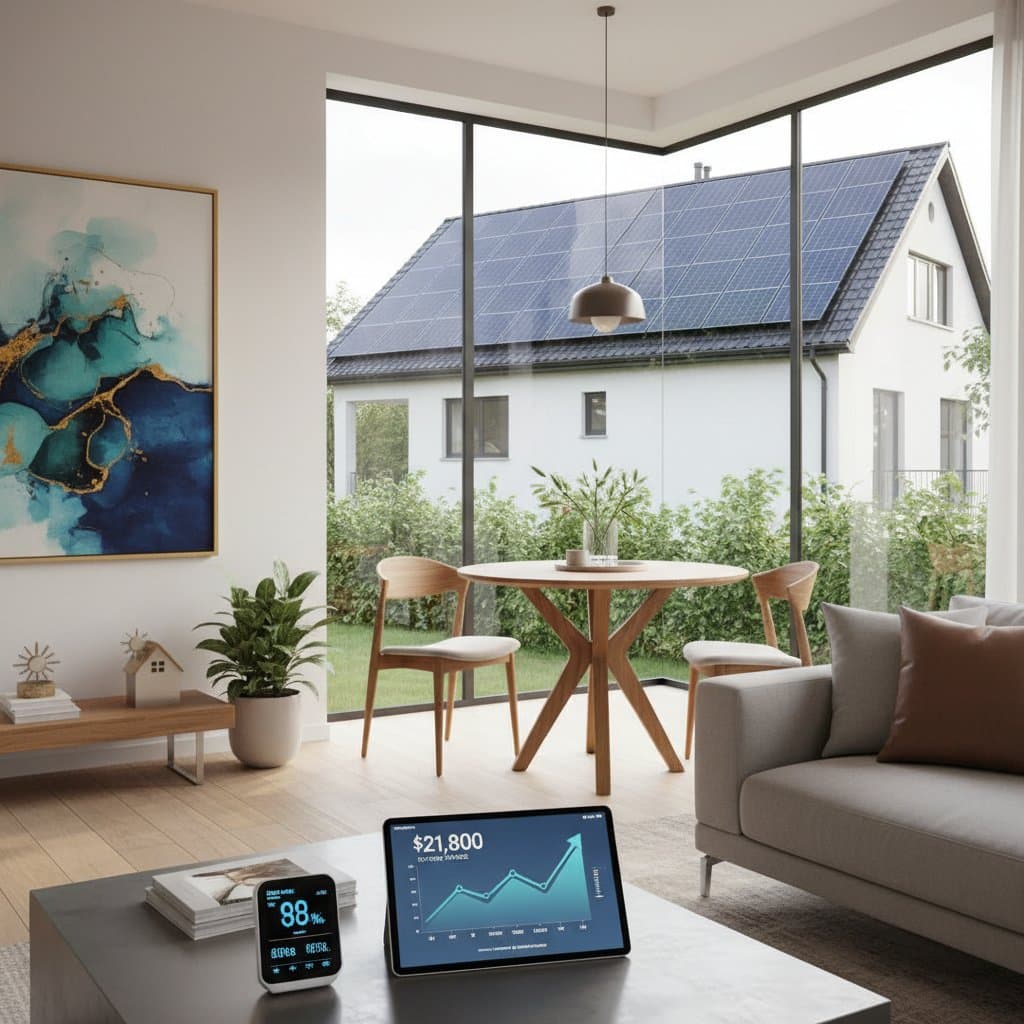Comparing Luxury Vinyl Plank and Hardwood Flooring in 2025
Homeowners often face a key decision when selecting flooring: luxury vinyl plank (LVP) or solid hardwood. Each material presents unique advantages in terms of cost, durability, and aesthetics. This guide provides a detailed comparison, including updated 2025 pricing, performance insights, and installation guidance to support informed choices for residential projects.
Understanding the Cost Breakdown
Costs for flooring extend beyond material prices to include installation, maintenance, and potential repairs. In 2025, expect LVP materials to range from $3 to $8 per square foot, depending on thickness, design complexity, and brand quality. Installation adds $1 to $3 per square foot for floating methods, making total costs $4 to $11 per square foot for most projects.
Solid hardwood, by contrast, starts at $6 to $15 per square foot for materials alone, with premium species like oak or walnut reaching higher. Professional installation, which often involves nailing or gluing, costs $3 to $6 per square foot. Finishing unfinished boards adds $2 to $4 per square foot. Overall, hardwood projects total $11 to $25 per square foot, though long-term value may offset initial expenses through refinishing.
These figures reflect average U.S. market rates, influenced by regional labor and material availability. Budget-conscious homeowners find LVP more accessible for large areas, while hardwood suits investments in high-traffic living spaces.
Evaluating Pros, Cons, and Ideal Applications
Luxury Vinyl Plank (LVP)
LVP mimics wood grains with high-resolution printing on durable vinyl layers. Its waterproof core handles moisture effectively, making it suitable for kitchens, bathrooms, and basements.
Advantages:
- Resists water damage from spills, floods, or humidity without warping.
- Supports quick, tool-light installation that allows placement over existing floors in many cases.
- Requires minimal upkeep; simple sweeping and occasional mopping suffice, with no need for periodic refinishing.
Disadvantages:
- Lacks the ability to refinish; once the top layer wears, full replacement becomes necessary.
- Shows dents more readily from heavy impacts, such as dropped objects or furniture legs.
- Typically lasts 10 to 20 years, shorter than hardwood under similar conditions.
LVP excels in moisture-prone areas or homes with pets and children, where practicality trumps traditional elegance.
Solid Hardwood Flooring
Hardwood derives from natural timber, offering authentic textures and warmth that enhance interior design.
Advantages:
- Boosts home resale value with its premium, timeless appearance that appeals to buyers.
- Endures 50 years or more with proper care, including up to four refinishing cycles to restore surfaces.
- Adapts to temperature changes when acclimated correctly, providing stable footing in controlled environments.
Disadvantages:
- Absorbs moisture easily, risking swelling or buckling in damp locations like laundry rooms.
- Demands higher upfront investment for materials, labor, and on-site finishing.
- Calls for regular maintenance, such as avoiding direct sunlight to prevent fading and using protective pads under furniture.
Hardwood performs best in upper-level living rooms, bedrooms, and dining areas, where aesthetic longevity and value addition take priority.
Installation Processes: Step-by-Step Guidance
Proper installation ensures longevity and performance. Both options require preparation, but methods differ based on material properties.
Installing Luxury Vinyl Plank
Gather knee pads, gloves, and safety glasses for comfort and protection during the process.
- Inspect and level the subfloor, filling cracks or dips with a self-leveling compound to achieve a flat surface.
- Roll out underlayment for soundproofing and moisture barriers if the subfloor demands it.
- Connect planks using tongue-and-groove edges for floating installs, or apply adhesive for glue-down applications in high-traffic zones.
- Measure and cut planks to fit around obstacles, using a utility knife or fine-tooth saw, and maintain a 1/4-inch expansion gap along walls.
- Secure trim moldings and transition strips to cover edges and join rooms seamlessly.
Experienced individuals cover 200 to 300 square feet daily, completing small projects in one to two days. Contractors accelerate this for larger spaces.
Installing Solid Hardwood
Prepare with a dust mask, hearing protection, and safety glasses to manage wood particles and noise.
- Allow boards to acclimate in the installation room for 48 to 72 hours, matching ambient humidity and temperature.
- Install a vapor barrier over concrete subfloors and align boards perpendicular to floor joists for structural support.
- Secure planks by nailing or stapling through the tongue every 6 to 8 inches along edges and field, ensuring tight fits.
- For unfinished wood, sand progressively with coarse to fine grits, then apply stain and multiple sealant coats for protection.
- Add baseboards and thresholds to finish edges and protect against wear.
Professionals handle 100 to 150 square feet per day, extending timelines to three to five days for sanding and finishing in average rooms.
Common Pitfalls and Prevention Strategies
Subfloor preparation stands as a frequent oversight. Uneven bases lead to gaps or clicks in LVP and warping in hardwood; always verify flatness within 3/16 inch over 10 feet.
Humidity management proves critical for wood. Monitor levels between 35 and 55 percent during and after installation to prevent expansion issues like cupping or shrinkage gaps.
Adhesive selection matters for LVP. Opt for moisture-resistant formulas that withstand temperature fluctuations, avoiding standard glues that degrade over time.
Seam staggering enhances visual appeal. Offset joints by at least 6 inches in adjacent rows to distribute stress and create a natural pattern, steering clear of repetitive lines.
Deciding Between Professional and DIY Approaches
Assess personal capabilities with a structured evaluation. If prior experience includes precise cutting and basic assembly, floating LVP presents a viable DIY option. Hardwood demands specialized tools like flooring nailers and orbital sanders, along with finishing expertise.
Safety considerations favor LVP for beginners, as it involves fewer hazards than hardwood's dust and power equipment. Tool requirements remain minimal for vinyl: a handsaw, mallet, and spacers suffice.
Engage professionals for complex scenarios, such as integrating radiant heating systems or correcting subfloor imperfections. They also ensure seamless matching of wood tones in expansions and maintain alignment in expansive, open-plan areas.
DIY suits LVP installations up to 500 square feet, offering cost savings on labor. Larger or intricate projects benefit from expert crews to minimize errors and material waste.
Essential Comparison Checklist
- Budget Alignment: LVP totals $4–$11 per square foot; hardwood $11–$25. Select based on project scale and financial priorities.
- Moisture Exposure: Prioritize LVP for basements or kitchens; reserve hardwood for dry, upper-level spaces.
- Longevity Needs: Choose hardwood for 50+ years of refinishable use; LVP for 10–20 years of low-maintenance service.
- Aesthetic Goals: Hardwood provides authentic warmth; LVP offers versatile, wood-like designs at lower cost.
- Installation Ease: LVP allows DIY floating; hardwood requires acclimation and pro finishing for best results.
- Maintenance Tolerance: LVP demands little effort; hardwood needs periodic care to preserve finish.
Selecting the Optimal Flooring for Your Home
The choice between LVP and hardwood hinges on lifestyle, location, and long-term plans. LVP delivers practical, affordable solutions for busy households facing moisture challenges. Hardwood invests in enduring beauty and equity growth for cherished living areas.
Review site-specific factors like traffic patterns and budget constraints before proceeding. Consulting local suppliers for samples confirms selections align with expectations. With thoughtful planning, either option elevates home comfort and functionality effectively.



